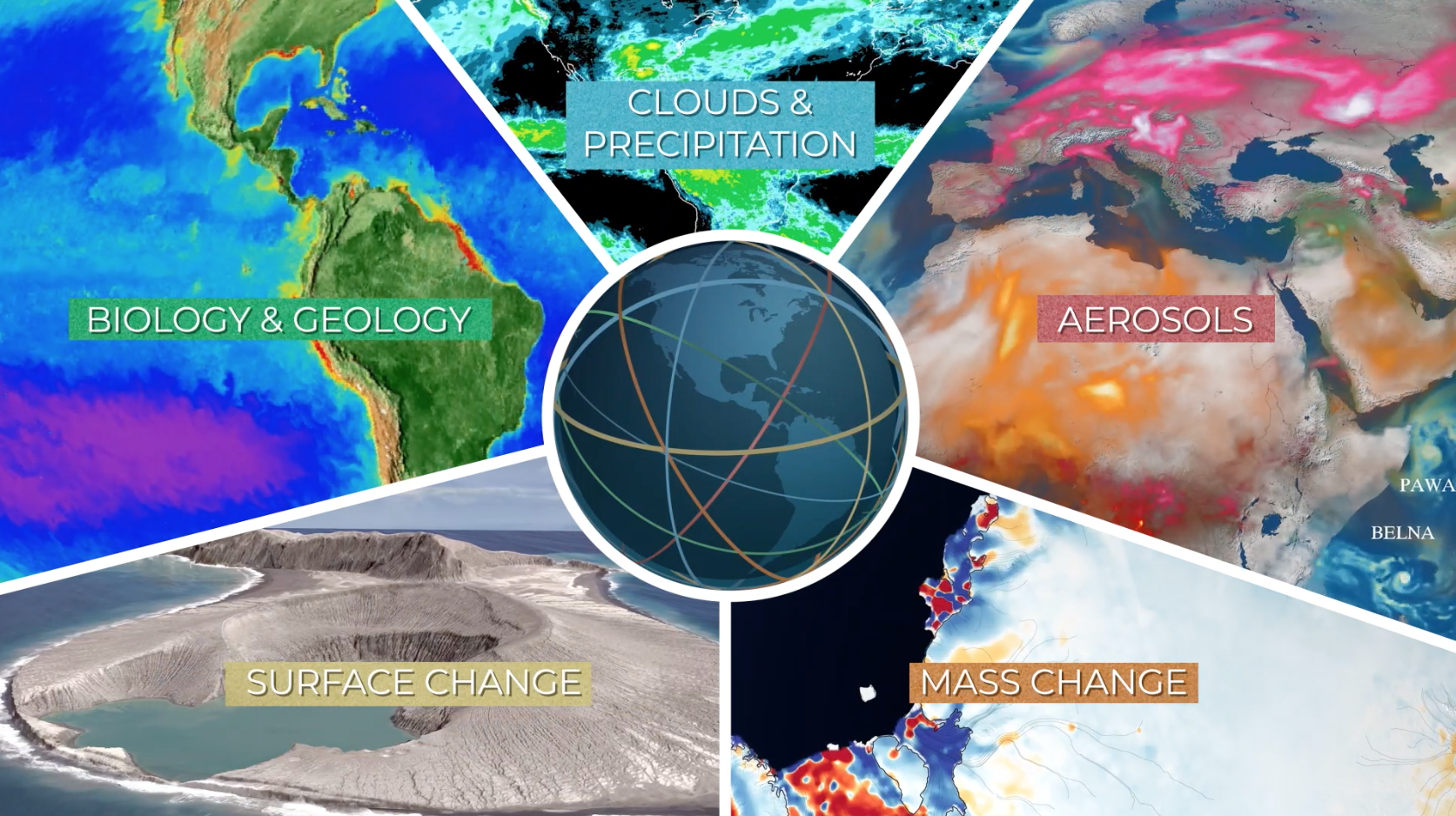From Observations to Models
NASA’s Global Modeling and Assimilation Office (GMAO) uses the Goddard Earth Observing System Model, Version 5 Data Assimilation System (GEOS-5 DAS) to produce global numerical weather forecasts on a routine basis. GMAO forecasts play important roles in managing NASA’s fleet of science satellites and in researching the impact of new satellite observations.
In order to provide timely information about the state of the atmosphere for NASA instrument teams and researchers, the GMAO runs the GEOS-5 DAS four times each day in real time. For each forecast, it is necessary to provide accurate initial conditions that drive the GEOS-5 forecasts. To do this, the best estimate of the full, three-dimensional atmospheric state is determined by combining the latest observations and a short-term, 6-hour forecast—a process known as data assimilation. The GEOS-5 DAS assimilates more than 5 million observations during each 6-hour assimilation period.
These observations are assembled from a number of sources from around the globe, including NASA, NOAA, EUMETSAT (European Organization for the Exploitation of Meteorological Satellites), commercial airlines, the US Department of Defense, and many others. Similarly, each observation type has its own sampling characteristics. It can be seen in the animation how different observation types have different strategies. One of the main challenges of data assimilation is to understand how all these observations are alike, how they differ, and how they interact with each other.
Funding for the development of the GEOS-5 model and data assimilation system development comes from NASA's Modeling, Analysis, and Prediction Program and the NASA Weather Focus Area's contribution to the Joint Center for Satellite Data Assimilation.
The GEOS-5 DAS runs at the NASA Center for Climate Simulation, which is funded by NASA’s High-End Computing Program.
For More Information:
http://gmao.gsfc.nasa.gov/
http://www.nccs.nasa.gov/images/data_assim_story_072815.pdf
This animation shows the global observations assimilated into the GEOS-5 data assimilation system over 6 hours. Data assimilation occurs four times per day.

Legend showing the observation types assimilated into the GEOS-5 data assimilation system.
Credits
Please give credit for this item to:
NASA/Goddard Space Flight Center's Global Modeling and Assimilation Office
-
Scientists
- Will McCarty (NASA/GSFC)
- Ronald Gelaro (NASA/GSFC)
- Albert Huang (University of Maryland, SSAI)
-
Animator
- Will McCarty (NASA/GSFC)
-
Writer
- Jarrett Cohen (Global Science and Technology, Inc.)
-
Project support
- Eric Sokolowsky (Global Science and Technology, Inc.)
- Leann Johnson (Global Science and Technology, Inc.)
Release date
This page was originally published on Thursday, May 7, 2015.
This page was last updated on Monday, March 3, 2025 at 12:03 AM EST.
Datasets used
-
[GEOS5-DAS]
ID: 559The GEOS5 model with the DAS data preloaded when executed.
See all pages that use this dataset
Note: While we identify the data sets used on this page, we do not store any further details, nor the data sets themselves on our site.


![Music: Favor by Victor Maitre [SACEM]Complete transcript available.](/vis/a010000/a013500/a013567/GMAOThumb.jpg)